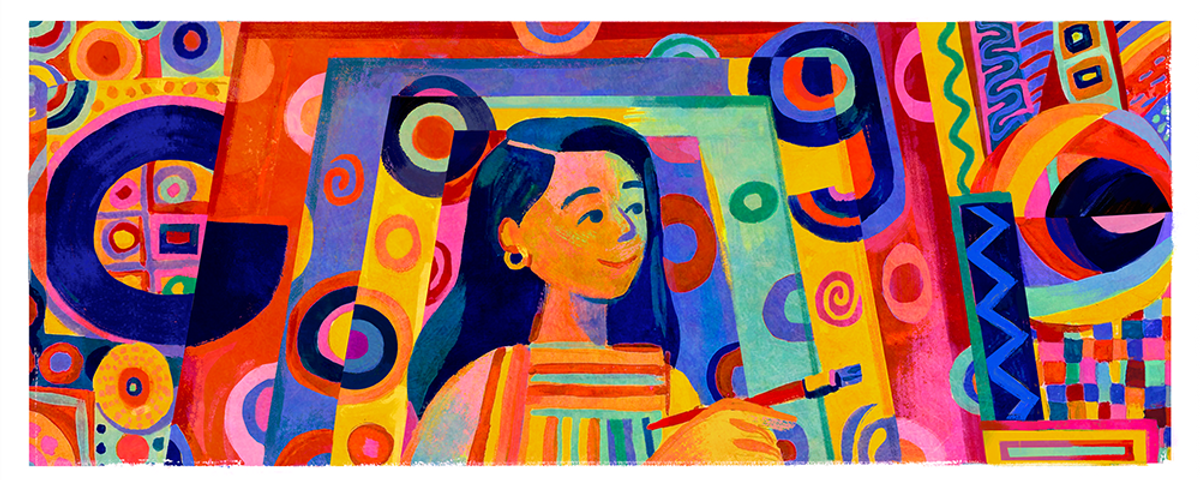On this day in 1984, the Filipina artist and feminist Pacita Abad became the first woman to be awarded the prestigious Ten Outstanding Young Men of the Philippines Award, sparking controversy. Today’s Google Doodle, which depicts a colourful portrait of Abad at the easel, honours the artist for accepting the award in the face of oppressive gender inequities in the Philippines, and for her political activism.
Abad’s nephew, the London-based artist Pio Abad, recalls that his aunt’s nomination for the Philippines prize caused “enraged critics to accuse the award-giving body of becoming bereft of conventional wisdom as to allow a woman to invade this yearly search for outstanding young men”.
“But, in true fashion, Pacita shrugged it off by going on stage and saying that it was about time a woman was among the outstanding young men,” Pio says. “She was a pioneer in so many ways [and] it’s brilliant that Google has honoured her, and that more people will get to know about her incredible life and be inspired by her work.”
Pacita Abad, was born in 1946 in Batanes, in the northern Philippines. She became a vocal opponent of the Marcos dictatorship in 1968 while studying law in Manila. After leading a student demonstration to the presidential palace in 1970, Abad’s family home was hit with machine gunfire and she fled to San Francisco. She studied Asian history at the University of San Francisco, and later painting at the Corcoran School of Art in Washington, DC and The Art Students League of New York. Today, she is best-known for her vibrant and colourful works with political overtones, such as her Immigrant Experience series of trapunto paintings, in which she stuffed and stitched her canvases using traditional quilting techniques.
Abad travelled and created work throughout the world with her second husband, the painter Jack Garrity, and lived in Yemen, Bangladesh, Sudan, Papua New Guinea and Indonesia. In each place she visited, Abad was inspired to produce works that underline the societal and political issues of the region, as seen with the poignant 1979 series Portraits of Cambodia, which depicts the extreme poverty in the country. She died in Singapore in 2004, aged 58.
Abad was a prolific artist, producing more than 5,000 works in her lifetime that are held in collections such as the Brooklyn Museum, the National Museum for Women in the Arts and the Smithsonian American Art Museum in Washington, DC. Her work is slated to be shown in the forthcoming editions of the Berlin Biennale and the Gwangju Biennale in South Korea.
“I am a painter who paints from the gut but has a strong social conscience,” Abad wrote in her Feminist Artist Statement for the Brooklyn Museum. “I truly believe that, as an artist, I have a social responsibility for my painting to try to make the world a little better.”


